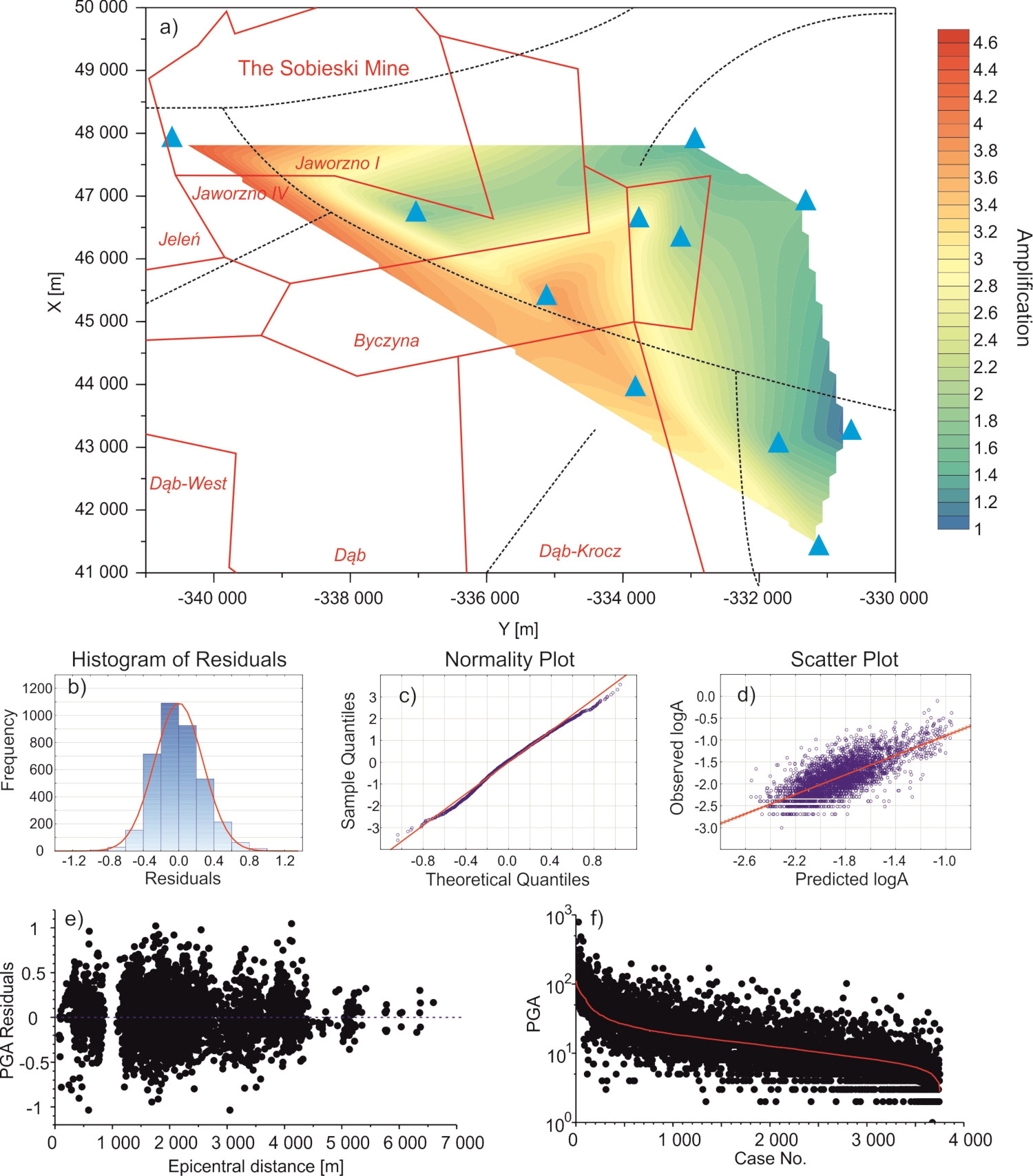Underground hard coal mining favors seismic events in terms of mining tremors and rockburst, which are a dynamic response of the rock mass following changes in the stress distribution. A strong event can cause seismic waves that propagate over a distance of several or several dozen kilometers. Shakings can be felt by many Upper Silesia inhabitants and can cause local damage to buildings and their interiors and disrupt urban infrastructure. A part of the seismic hazard analysis that tries to deal with this unfavorable phenomenon is a prediction of the occurrence of peak ground acceleration (or velocity) on the surface. The statistical relation that connects the seismic event size, epicentral (or hypocentral) distance with the ground amplitudes is called the ground-motion prediction equation (GMPE). So far, a study on the peak ground amplitude prediction in the Upper Silesian Coal Basin was made for selected mining areas and used various statistical models.
An article by the employees of the Institute of Earth Sciences, the University of Silesia, Dr. Maciej Mendecki and prof Adam Idziak, in cooperation with Polska Grupa Górnicza S.A., has appeared in the prestigious “Geophysical Journal International,” publishing by Oxford University Press, who describes new statistical models for three areas of the Upper Silesian Coal Basin: the Michałkowice-Rybnik thrust, the main anticline, and the main syncline. The estimation of the GMPE models’ parameters indicated the significance of considering the local amplification phenomenon, which improved their assessment. The amplification phenomenon is based on the wave amplitude strengthening in the horizontal direction in relation to vertical direction due to the wave passing through loose Quaternary deposits. The horizontal amplification may reach values of several or even >10 times, depending on the sediment’s thickness and its type. The article also reviewed the current state of knowledge about the developed statistical models by other researchers and systematizing them. The article compares local GMPE models to regional ones and it demonstrates a statistical relationship between the energy parameter and the distance parameter, which may be used to simplify the procedure for estimating GMPE models for the Upper Silesian Coal Basin. The attached figure presents examples of calculation results: the distribution map of the amplification coefficient for the Michałkowice-Rybnik overlap (a) and the results of the statistical evaluation of the model used – residual histogram (b), residual normality plot (c), scatter plot (d), residual variations with the epicentral distance (f) and comparison of the observed vibration amplitudes (black points) with the estimated median (red line).
Mendecki, M. J., Odrobińska, J., Patyńśka, R., & Idziak, A. F. (2021). Ground-motion prediction models evoked by seismicity in the Upper Silesia Coal Basin, Poland, the review with case studies. Geophysical Journal International, 224(2), 1381-1403. https://doi.org/10.1093/gji/ggaa525






